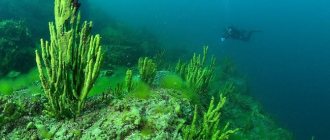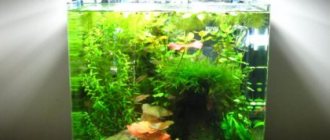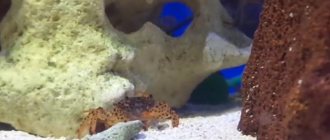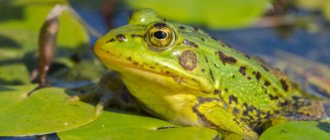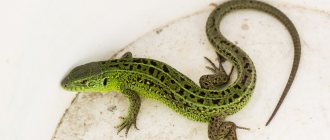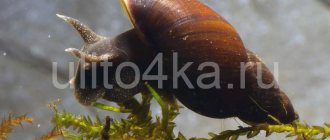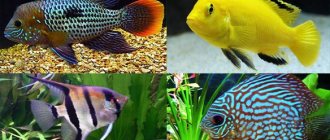The ancient ancestors of frogs appeared on Earth approximately 290 million years ago, and nature decreed that the most beautiful representatives of tailless amphibians are also the most dangerous. Tree frogs, frogs and toads mostly use toxic poisons for defense, and rarely attack first. Our short review presents the most poisonous frogs that have chosen the tropical forests, swamps and reservoirs of our amazing planet. And you can see the most poisonous insects in the article on our website TopCafe.su.
Here are the most poisonous frogs in the world:
13
Phyllomedusa bicolor
Among the tropical forests located in the Amazon basin, there lives such a beautiful, but rather dangerous phyllomedusa from the tree frog family.
The poison is not very toxic, but can cause gastrointestinal upset, hallucinations, and severe allergies. Local Indians use its poison to treat all kinds of diseases and in initiation rites to enter a trance.
It is often called the monkey frog, and its habits make it a very curious amphibian. The species is listed as endangered and is therefore protected.
12
Enemies of poison dart frogs in nature
The main enemies of poison dart frogs in nature are snakes and some types of spiders. They can easily swallow a miniature frog and are not sensitive to the poison that it secretes.
Snakes are considered the main enemies of poison dart frogs in nature.
In addition, dart frogs are susceptible to various types of fungal diseases. If the fungus infects the frog's body, it dies.
Striped leaf climber / Phyllobates vittatus
These colored frogs, living in the southwest of Costa Rica, with their striking appearance warn that they are dangerous and it is better to avoid these wonderful creatures.
Easily identified by the characteristic yellow stripe running down the back. The stripes run along the head and along the sides of the abdomen, which is why the frog received its specific name.
It is not possible to notice it right away, since it prefers to hide in crevices and between stones. The poison, when it gets on human skin, causes severe pain and can even lead to paralysis.
11
Appearance and features
Photo: Terrible leaf climber frog
The terrible leaf climber is one of the smallest representatives of the family. Its maximum size reaches 4 cm. The color of the frog is acidic, bright: yellow, light green, light green, orange, bordering on red. Sometimes pale white individuals are found.
It is not difficult for predators to notice such a frog in an open area, but the leaf climber warns of its own poisonousness with its color. Sometimes frogs have black stripes on their front legs and head near the eyes. If the frog is already old, black round specks of varying sizes may appear on its body.
Video: Terrible leaf climber
The belly and inner part of the paws of the leaf climber are lighter than the body, and sometimes the shade reaches milky white. The eyes are large, black, located on the sides of the head and slightly bulging upward. Small nostrils at the end of the muzzle are clearly visible.
The toes of the terrible leaf climber are not webbed, which prevents the leaf climber from swimming. But at the end of each finger there is a round seal - suction cups, with the help of which the frog moves along vertical surfaces. The terrible leaf climbers have a total of four long fingers. Sometimes they are covered with black spots or have a darker shade than the entire body of the individual.
When producing sounds, leaf frogs, like many frogs, inflate their chest sac. On the skin of the terrible leaf climber you can clearly see pores that secrete poison - the entire frog is covered with poisonous mucus. This poison does not harm the frogs themselves, as well as other individuals of this family and genus.
Blue Darter / Dendrobates azureus
The cute creature, as seen in the photo, with a characteristic blue coloration, prefers savannas and tropical rainforests, and feeds mainly on small insects.
Even a small concentration of poison is enough to kill large natural enemies, and deaths among humans have also been recorded in history. They grow up to 5 cm in length, and live among the foliage, gathering in groups of up to 50 individuals.
Despite the mortal danger, wildlife lovers keep the American inhabitant as a pet.
10
Social structure and reproduction
Photo: Terrible leaf climber
Dire leaf climbers have an unusual system of sexual maturation - it depends on the size of the frog, and not on its age. To begin producing offspring, a male needs to reach a length of at least 3.7 cm, and a female - 4 cm. These amphibians have a mating season, which falls during the rainy season - it is at this time that the frogs gather in large groups under the leaves and bark trees to hide from the drops.
Interesting fact: The terrible leaf climber is born non-poisonous, and only with age through food it acquires components that allow it to produce poison.
The male fertilizes all the females of the harem during a given period. Fertilization occurs during the laying of eggs, which remain in moist dry land under stones or leaves. Most often, females choose bromeliad leaves for laying. There are not many eggs - only about 15-30 eggs, so almost all frog individuals survive.
The female leaves the clutch immediately after fertilization, leaving it to the male. The male monitors several clutches at once, burying the eggs in moist soil and protecting them from possible attacks. Sometimes he even stirs the caviar so that the moisture is evenly distributed.
After the tadpoles appear, the male collects them on his back - they stick to him with the help of mucus and live in it for some time, feeding on substances secreted by the male’s skin. Future frogs also feed on the remains of the egg yolk. They are not in any danger on their father's back, so they stay on it for about a week.
Tadpoles can live in water, but there they tend to attack each other and eat their relatives. After two weeks they become full-fledged frogs. It is not known for certain how long the terrible leaf climbers live in the wild, but in captivity and with proper care they live up to 10 years.
Charming leaf climber / Phyllobates lugubris
The species name of the inhabitant of the Atlantic coast of Central America fully corresponds to the appearance of the frog. Multi-colored stripes run along the black body, from yellow to bright golden.
Not as poisonous as other representatives of the leaf climber genus, but able to defend itself from natural enemies. Possessing poison, it does not hide much, so it can easily be found on forest paths and the banks of rivers and reservoirs.
They are distinguished by leaf climbers and huge bulging eyes on a relatively small head.
9
Common types
There are 30 species of dart frogs in nature. Each one is unique in its own way.
Darter frog blue
The blue dart frog has impressive dimensions for this species (up to 5 cm). Endowed with bright, eye-catching colors. More often it is a blue tint in various variations, framed by black dots and spots. They are randomly located on the animal's body.
The blue dart frog grows up to 5 cm - this is a large size for this species
This tree frog is unusually photogenic.
Spotted poison dart frog
This frog is called a tree frog; its dyers reach a length of 7 cm. Its sides have a bright yellow tint, but its limbs are black or dark blue.
The spotted poison dart frog changes color depending on environmental conditions and nutrition.
The color of a frog can change depending on environmental conditions, soil, air and nutrition. More often found in Suriname, it leads a terrestrial lifestyle with virtually no immersion in water. Lives mainly in trees.
Golden dart frog
A very bright but poisonous frog, with the mucus of which the Indians smeared arrowheads. It is more common on the Pacific coast in the Columbia region.
The golden dart frog is a very bright, small and poisonous frog.
Red frog
The species lives in areas of Colombia and prefers to be at an altitude of 50 to 200 m above sea level.
Spends time on the ground or in the leaves of trees. Lays eggs in the ground.
The red frog lays eggs in the ground, not on leaves
Zimmerman's poison dart frog
Another subspecies of one of the most poisonous frogs. Most often found in the Andes or Peru. Also known in Ecuador.
For life, it prefers altitudes from 150 to 1500 above sea level. Distributed in the Amazon basin.
The colors are bright (yellow, green, blue), with black spots. Maximum length 30 mm.
Produces batrachotoxin, which can paralyze or even kill a person.
Zimmermann's dart frog is one of the most poisonous frogs
Terrible leaf climber
A poisonous frog of a bright yellow hue, with black eyes. When you see her, you can't help but admire how beautiful she is. However, you should not approach this baby. The fact is that it is very poisonous, and strong poison is produced on its back.
The terrible leaf climber is a very poisonous frog that lives in large colonies
Frogs exist in large colonies, settling on the crowns of trees. They prefer not to go down to the ground, they are afraid of water.
Little poison dart frog
A small frog that lives in the tropics and has spectacular colors. Its length varies from 17 to 25 mm. The skin is smooth, even shiny. The back has a bright red tint, with black spots and inclusions on it. Many have a blue or black tint. The belly is bright red, sometimes mixed with blue.
The little poison dart frog is fertile and lays up to 17 eggs at a time. They are guarded by males, exactly until the tadpoles appear.
The small poison dart frog is only 17 to 25 mm long
Adults prefer to eat ants, spiders and other insects. This frog is found in Central America or Panama.
This poison dart frog also produces deadly mucus on its skin, which is dangerous to both other animals and humans.
Painting poison dart frog
This is a frog, the length of which is from 2 to 4.5 cm. One of the largest in the poison dart frog family. Unlike other subspecies, here females can be slightly larger than males.
Most often these are black frogs with green or bronze streaks. The patterns are whimsical and eye-catching.
Loves forests and areas that have high humidity. It lives at an altitude of more than 1000 m above sea level.
He doesn't jump well, so he can't move from tree to tree. It feeds on ants, spiders, and small insects. The female lays up to 14 eggs. The species is distributed in Colombia, Panama and Nicaragua.
It is a target for venomous snakes because it moves slowly and cannot escape.
The poison dart frog is one of the largest in the family
Sacred Treecreeper
This is an amphibian from the poison dart frog family, which is common in South America.
The length reaches 3.5 cm. It is very similar to other representatives of the genus of poison dart frogs. Males are slightly larger than females. They are poisonous, as they feed mainly on poisonous insects. The color is contrasting, bright yellow and black. Interesting patterns form on the frog's leg.
The abdomen and muzzle are black, so the poison dart frog is difficult to distinguish in shady areas.
It lives in tropical forests and lowland swampy areas, at an altitude of 800 m above sea level.
The way of life and nutrition is terrestrial. Prefers high temperatures, about 30 °C, and high humidity. It can lay up to nine eggs at a time, and tadpoles appear within three weeks.
Distributed in Guyana, Brazil, Venezuela and Colombia.
The sacred dart frog can lay up to nine eggs at a time
Dapper Darter (tri-color)
The body length of this poison dart frog reaches 22 mm. Males are larger than females. In nature, individuals have slightly different colors than those that grow at home. It has yellowish stripes that run longitudinally from the muzzle to the hind legs. Individuals that live in the wild have less pronounced colors.
The skin is toxic, the frog is poisonous. Lives mainly in mountainous areas. Prefers to settle along the banks of streams and rivers with warm water.
The altitude of residence is from 1000 to 1500 m above sea level.
Has high activity during the daytime, and reduces it at night. Lives up to 15 years.
Lays 10 eggs during the breeding season.
The dapper poison dart frog has toxic skin, is poisonous, lives up to 15 years
Golden dart frog
A frog with a spectacular appearance that lives along the banks of the rivers of Colombia. It has a yellow, orange, or less often lemon-colored color mixed with black and green.
Likes to live in trees. Lays up to 14 eggs at a time.
The golden dart frog lives in trees and lays up to 14 eggs at a time.
Amazonian poison dart frog
This frog lives in the Amazon basin, for which it earned its name. Very small, dimensions only 18 mm. On the back there is a peculiar pattern of three longitudinal yellow stripes that go to the hind legs.
They live either along river banks or in trees. They breed only during the rainy season.
The female can lay up to six eggs at a time. Distributed in Colombia and Ecuador.
Amazonian poison dart frog - very small, only 18 mm, lays up to 6 eggs at a time
Red-backed poison frog / Ranitomeya reticulatus
This beauty, with a medium-strength venom, lives among the natural beauties of Peru. It got its name from the characteristic red color of its back, while the rest of the body is spotted.
Despite the not very toxic poison produced by the glands of the frog, it is enough to cause health problems in humans, as well as kill the animal.
The frog receives poison by eating poisonous ants, and uses it in moments of danger. At other times, it is stored in glands on the frog's body.
8
Keeping at home
Dart frogs live much longer at home than in the wild.
Many subspecies have already adapted well to life in captivity and are in good health. But before you get a frog at home, it is important to understand what conditions need to be created for its comfortable life.
Terrarium for an amphibian
Buy a terrarium exclusively for poison dart frogs.
This species can get along with few people in the same space. The dart frog is a small, active frog, so there is a high probability that it will not be possible without injuries and disastrous outcomes. Comfortable temperature for such an amphibian is from 18 to 25 degrees Celsius.
If the house is warm, there is no need for additional heating of the terrarium.
Frogs love bright light, so a light bulb is not enough during the day. You need to install a special lighting device that will direct ultraviolet rays directly to your amphibian. The optimal length of daylight for such a frog is 12 hours. If the pet receives enough light, it will quickly grow, develop and behave actively.
Dart frogs love light, so you need to install additional lighting
Monitor the humidity levels; in a terrarium it should be between 80% and 100%. Experts recommend constantly irrigating the terrarium with a spray bottle.
Provide your pet with a good ventilation system. Find a small reservoir of water. The frog definitely needs bathing to regulate its body temperature. It is necessary to change the water daily, as it quickly becomes dirty.
Give the frog only settled water, preferably non-chlorinated. Otherwise, the pet may get sick or even die.
Place green plants in the terrarium; the frog loves them very much. You can put ficuses and orchids there. The amphibian must be able to function freely near plants and reach leaves. This is necessary to make her feel comfortable.
Nutrition
The diet of poison dart frogs is another important aspect to pay attention to. Despite the fact that the frog is small in size, it has a good appetite. In nature it feeds on live food. The targets include ants, small spiders and insects.
Offer poison dart spiders, mites, fruit flies, aphids, woodlice, or small larvae.
If it is not possible to regularly pamper your frog with such a delicacy, you can introduce mealyworms into the diet.
Mealyworm is an ideal food for poison dart frog
It is worth noting that frogs are not too picky about their food, the main thing is that it is constant.
The dart frog should receive food 2 times during one day, in the morning and in the evening.
Do not forget to leave a small amount of food in the terrarium itself so that the poison dart frog can eat when it sees fit.
Reproduction
To the delight of poison dart frog owners, this amphibian reproduces not only in natural conditions, but also in a terrarium.
To understand that a frog needs to reproduce, you should listen: the males begin to make certain sounds that can be taken as signals for action.
During this period, males exhibit pronounced territorial behavior. They are active and sometimes even aggressive to other inhabitants of the terrarium.
For dart frogs to actively reproduce, the temperature must be 1-2 degrees higher than normal.
Provide a secluded place for the frogs to place their eggs. To do this, install small cups. You can do it easier and put a coconut shell.
After the eggs have been laid, you need to remove them from the aquarium and place them in a tank of clean water. Tadpoles appear after 2-3 weeks. These babies can be fed with special whey or tubifex.
Do not be alarmed if the tadpoles do not eat anything in the first days after emergence. This is normal, and they will get their food from liquid.
For dart frogs to actively reproduce, the temperature must be 1-2 degrees above normal
Upon reaching two months of age, tadpoles can already eat adult food. At this time, you can place young animals with adults and not worry about the life and development of your pets.
Diseases
Dart frogs, like many other amphibians, are susceptible to various types of diseases. These creatures are very fragile and even keeping them in sterile home conditions can lead to infection. Common diseases in frogs:
- mycosis;
- intestinal obstruction;
- infections and pathology;
- blood poisoning;
- rotting.
Most often, health problems arise due to poor nutrition.
Health problems in frogs arise due to the fact that they do not eat properly. Therefore, if the owner does not pay attention to this issue, then the frogs cannot count on a long life.
If the disease is noticed at an early stage, it can be treated. But if the disease has entered a serious stage, then usually it will only end in the death of the pet.
There are several rules that will help protect your wards from such a disastrous outcome:
- Monitor the population in the terrarium. Overcrowding should not be allowed; the comfort of the residents should be taken into account.
- The water in the tank should always be clean and should be changed every day.
- Food should be of high quality and varied.
- Give only fresh food.
- Monitor temperature and humidity indicators. A sharp drop in temperature should not be allowed, as frogs sharply reduce all manifestations of activity.
If you intend to add new residents to the terrarium, they should be kept in quarantine for two weeks. During this time, monitor them, their behavior, signs of any diseases. If 2 weeks of quarantine have been successful, you can move your pets into the terrarium.
Chiriquita toad
In Panama and Costa Rica you can find one of the most poisonous toads, which has a bright color and does not grow more than 5 cm. Note that males are usually smaller and reach a length of only 3 cm.
When poison gets on the skin, the channels of nerve endings are blocked, and the person experiences a loss of coordination of movement, the person begins to have convulsions, and the sad result of all this can be complete paralysis.
Unfortunately, an antidote has not yet been invented, but it is necessary to carry out general detoxification in time, and then irreparable consequences for the health of the human body can be avoided.
7
Three-striped leaf climber
The three-striped leaf climber is a truly dangerous amphibian. Despite the potential harm, there is a chance of benefit. The tribes that live with this type of leaf climber have learned to extract beneficial properties.
Frogs live in Ecuador. The amphibian creature is small in size, but at the same time it can produce strong poison and kill any person or animal. Despite this, in the last century, scientists and researchers nevertheless began to breed 3-banded leaf climbers artificially, since the use of a certain dosage of the produced poison guarantees the successful elimination of pain. In this case, the effectiveness is higher than that of morphine.
Poison tree frog / Trachycephalus venulosus
A rather large frog, growing up to 9 cm in length, comes from Brazil, which is why it is also called the Brazilian tree frog.
It has an unusual coloration, consisting of spots of various sizes, forming a concentric pattern throughout the body. A distinctive feature is also the small red spots on the back and neck of the amphibian.
They prefer to live most of their lives in trees, and during breeding periods they move closer to bodies of water. Females lay eggs in ponds and lakes, which can dry out, but the offspring still survive early.
By the way, if you haven’t looked at our article about the most unusual species of frogs, be sure to do so!
6
Lifestyle
Initially, dart frogs settled along the banks of streams, swamps and rivers. They love shady areas, so they are easy to spot in forests and mountains where it often rains.
They live both in low-lying areas and at altitudes up to 2000 m above sea level. Frogs spend time not only near the pond, but also in the trees. They easily overcome heights, move along branches and jump from tree to tree.
Dart frogs live both in lowlands and at altitudes up to 2000 m above sea level
If there are low-lying meadows in the area that are flooded, then the frogs move there.
They live in plantations and can be found in savanna or heavily overgrown humid forests. Several subspecies of this family can survive in dry areas. True, they require shade, as well as sources of fresh water.
Frogs thrive in high humidity, which ranges from 70% to 100%. The ideal ambient temperature is between 24 and 28 degrees Celsius. If at night the thermometer drops to below 18 degrees, the frog will also feel good.
Dart frogs avoid large bodies of water with strong currents. But streams, lakes and swamps suit them.
They settle along the banks of warm bodies of water, but avoid cold ones. And there is logic in this. The fact is that in cold water the frog's metabolism slows down greatly, it becomes sluggish and can even drown.
The frog feels free in its natural environment, as it has a bright color that scares away predators.
Poison dart frogs are active only during the daytime, and at night they sleep or simply behave quietly. They sleep in safe places, preferring shelters in the form of tree crevices and armfuls of leaves. Less commonly found in moss or driftwood drifting through the water.
Dart frogs have bright colors that scare away predators
Males may begin to show aggression at certain periods. In this way they protect the territory and drive away rivals. During such periods, their sounds begin to resemble screams, and their movements become active.
Although frogs can jump high, poison dart frogs rarely use this ability. More often they run or move slowly. Sometimes they fall into a state of coma: this happens when danger threatens.
They are not picky about food. They can eat spiders, worms, and insects. A special treat for them are ants, termites, and mites.
Darter frogs live up to 25 years, and in man-made conditions - up to 30.
Little poison dart frog / Oophaga pumilio
A very tiny, red tropical frog lives high in the mountains among the ancient trees of the tropical forests of Central and South America.
Bright, literally flashy coloring is a warning signal. It is better to avoid it so as not to get severe burns and health problems.
The poison is concentrated in the glands, and they get it by eating poisonous ants. It is noteworthy that it has one natural enemy - the common tree frog, which is not affected by poison dart frog.
5
The benefits and harms of poison dart frogs
Tree frogs are needed by nature and are very useful. They destroy a large number of insects, thus reducing the number of crop pests. Despite the fact that they secrete a toxic mixture, frogs do not harm the environment.
But a person should avoid some types of poison dart frogs, because they can be poisonous.
The dart frog's venom can kill a person in half an hour.
When kept at home, the frog loses toxicity and becomes safe. This is possible with proper feeding and specially created conditions.
Dart frog toxin is popular in medicine. It is not yet used in medicines, but scientists are actively looking for uses for it. An antibiotic has already been developed, which is based on a frog toxin that can save you from serious diseases, and a product has been released that allows you to fight insects.
The mucus of the dye dart frog has an analgesic effect comparable to that of morphine. Scientists also plan to use it in the future.
Bernhard's Mantella / Mantella bernhardi
A resident of the island of Madagascar hides among fallen leaves, hunting for flies and other insects.
It has a characteristic black color, and males also have a horseshoe-shaped spot on their neck. Females do not have such a pattern, but they are larger in size than males.
A frog is not born poisonous, but over time the skin produces toxic poison, which leads to burns and allergies. This species of mantella leads the most active lifestyle among other African species.
4
Features of character and lifestyle
Photo: Terrible leaf climber from the Red Book
In general, the dire leaf climber is not that terrible - they do not attack first and are only poisonous to those who deliberately attack them. Females and males have no external sexual differences, but they are different in behavior. Males are warlike against each other. Each male leaf climber has his own site, where from three to ten females live. The male mates with these females and protects them from the attacks of other males.
If another male appears nearby, then the owner of the site begins to demonstrate his skills: he screams piercingly, and his cry is similar to the trill of a bird. Two males can sit opposite each other for hours and scream warlikely. Rarely does it come to a fight - males can bite each other and also hit each other with their paws - this is reminiscent of freestyle wrestling. If the arriving male wins, he drives away the owner of the territory and takes the area for himself along with a harem of females.
Sometimes females can be aggressive towards each other - the reason for this behavior has not yet been identified. They may also yell at each other or even fight, but are usually peaceful. Females calmly move around the male’s territory and can move to other areas in other harems without consequences. Despite their territorial lifestyle, individuals of the terrible leaf climber live quite separately. They do not have common shelters, do not hunt together and do not have any kind of hierarchy.
Each individual spends the entire day hunting - they wait for insects in ambush. At night, they go to shelters - this can be justified by the fact that at night predators may not distinguish the bright warning color of the frog and eat it, which will be disastrous for both. At home, the terrible leaf climber can also be housed in groups of several females or a male with females. They feel great in a terrarium and reproduce readily.
Common Toad / Bufo bufo
The distribution area of the gray toad is quite extensive, from the Siberian expanses of Russia to the western tip of Europe and North Africa.
The largest toad living in Europe is also poisonous. The poisonous toad is especially dangerous to livestock, as well as to humans. It is extremely undesirable for the venom of this amphibian to get into the eyes or onto the oral mucosa.
Another interesting point: in times of danger, the toad takes a threatening pose, rising high on its paws.
3
Spotted poison frog / Ranitomeya variabilis
You can meet this forest beauty, whose body is painted with spots of different colors and sizes, only in the vastness of Peru, and also in Ecuador.
But this beauty is deceptive, as the frog is one of the most poisonous creatures in Latin America. Even a small amount of poison is enough to kill 5 people.
The venom is so toxic that light touching an amphibian can cause great harm to health. One consolation is that the frog is very calm and will never attack first.
2
Toxicity
Every breeder needs to know that dart frogs are toxic. The skin can secrete up to 100 toxic substances. Some of them are harmful to health, while others lead to dangerous consequences, including fatal ones.
Batrachotoxin is a paralytic poison of the dart frog, deadly to humans.
One of the most dangerous substances is batrachotoxin, which destroys a person in half an hour. This is a paralytic poison, the toxicity of which is 30 times higher than the substance secreted by the cobra. The poison dart frog's skin has such a consistency that it can destroy 10 people at once.
Even in ancient times, the Indians, knowing this peculiarity of the frog, caught it and smeared the arrowheads with the extracted poison, thus destroying the prey even with a slight traumatic hit.
Tree frogs are dangerous to handle. If there are wounds on the skin, the poison will quickly enter the bloodstream and begin a lightning-fast destructive effect on the body. An antidote to such a substance has not yet been discovered, so the best protection is maximum caution.
Yeah / Rhinella marina
The poisonous tropical toad takes an honorable second place among all toads, but its toxicity makes it a leader among poisonous amphibians.
The largest specimen reached a size of 24 cm, although on average the toad grows from 15 to 17 cm. It comes from Central America, but to fight insects they were brought to Australia, from where Aga settled on the islands of Oceania.
The strongest poison affects the heart and affects the nervous system. The most dangerous thing is that the green toad can shoot poison over a distance.
1
Terrible leaf climber / Phyllobates terribilis
A small inhabitant of the rainforests on the southwestern tip of Colombia, the most poisonous frog in the world.
Adults grow no more than 2–4 cm, and the color is contrasting and quite bright. Yellow frogs are so poisonous that even a slight touch to it is enough to cause death. Phyllobates terribilis is born non-poisonous, and then, by consuming insects, it produces poison.
The most interesting thing is that in captivity, the Colombian poison frog gradually loses its poisonousness, since the diet does not contain insects, which contribute to the production of the deadly poison.

